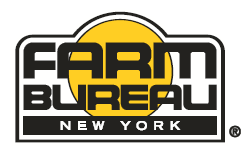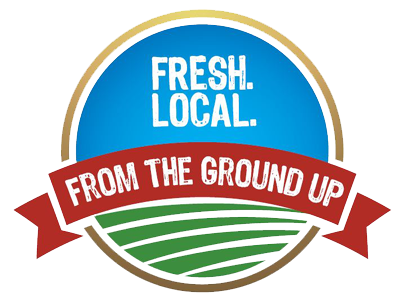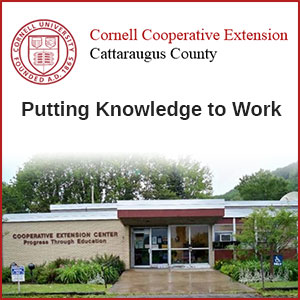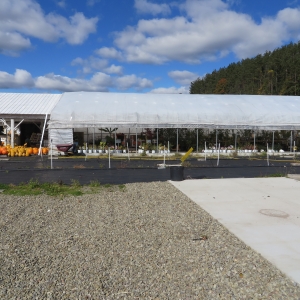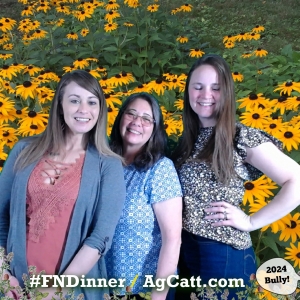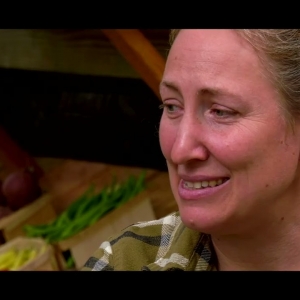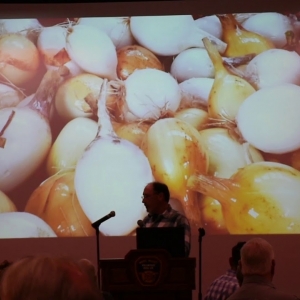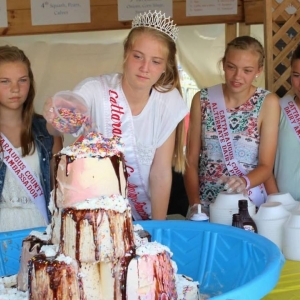Other Ag News: Frequently Asked Questions about Bird Flu in New York State
What is Avian Influenza, and where does it come from?
Highly Pathogenic Avian Influenza is a contagious poultry virus that has caused significant financial losses to the U.S. poultry industry and disruptions to the nation’s supply of eggs and poultry meat. The highly pathogenic strain, H5N1, has been circulating in the U.S. since February 2022 resulting in the death and euthanasia of over 148 million birds in nearly 1,500 commercial and backyard flocks. This is the nation’s largest animal health emergency.
Waterfowl, both wild and domestic, act as the primary carriers, which can spread the virus to other wild bird and domestic poultry populations. Wild waterfowl populations are monitored, and hunters have the option to send their harvested birds in for testing. Wild waterfowl regularly carry low-pathogenic strains of the virus, but it can easily mutate to a highly pathogenic strain, as we’ve seen with this outbreak. The disease has spread to mammalian and avian scavengers that feed on the carcasses of dead, infected wild waterfowl. It has also been found to spread to poultry from infected dairy cattle.
Is HPAI in avian species a concern for NYS?
Chickens coming out of their coop into a grassy field. RJ Anderson / Cornell Cooperative Extension
Yes. Since the February 2022, we have seen 28 cases of this disease in domestic flocks in NYS. Of those, 2 flocks were commercial, 7 were identified at live bird markets, and 19 were found in backyard flocks. Affected flocks have been identified in Columbia, Dutchess, Fulton, Kings, Monroe, Onondaga, Orleans, Putnam, Queens, Suffolk, Sullivan, Tomkins, Washington, Wayne, and Ulster Counties. These flocks have been euthanized to help control the spread of the virus.
It is difficult to predict how large of an impact the disease will have moving forward, but the risk posed is significant since the virus is present in the environment via wild bird hosts. To date, there have been 472 positive wild bird cases across most counties in the state. The majority of wild birds identified have been waterfowl, with some corvids (crows, ravens), and some birds of prey. HPAI has also been found in mammalian scavengers that feed on the carcasses of infected wild fowl.
For more information on current detections on HPAI in wild birds, commercial flocks, and backyard flocks, visit: https://www.aphis.usda.gov/aphis/ourfocus/animalhealth/animal-disease-information/avian/avian-influenza/2022-hpai
While the disease is circulating in wild and domestic bird populations, there is no need to panic, but there is need to be on high alert. Poultry owners should be prepared to report any suspicious disease symptoms in their flocks.
How does HPAI spread?
HPAI lives in the respiratory and/or intestinal tract of birds. It can be picked up from contact with infected feces, surfaces, or through the air, though aerial transmission from farm to farm is unlikely. It can be transported on infected feed, clothing, or equipment. It can also be spread through wild bird populations encountering domestic birds and can be transported through and on other living creatures, such as dairy cattle, rodents, and insects. Once on the farm, the disease is readily passed from bird to bird, infecting an entire flock quickly.
Transmission into poultry flocks from dairy cattle is not yet a concern for NYS farms, since it has not yet been identified in our herds. Regular milk testing to confirm that the virus has not entered our state’s dairy farms is being conducted across the state.
Which types of birds are affected?
Domestic poultry flocks of any size, from back yard to commercial, and any species can be affected. Game birds and ratites (emu, ostrich, rea) can also contract the disease. Waterfowl may be affected and not show symptoms.
Affected wild bird populations are predominantly waterfowl, which can carry the disease and not show symptoms. However, other wild birds, including birds of prey, game birds and corvids (crows, ravens) can be infected with the virus, too.
What are the symptoms of HPAI?
Any birds can be affected, but birds other than waterfowl react most strongly to the virus. Poultry infected with HPAI may show one or more of the following symptoms:
- Sudden death without clinical signs
- Lack of energy and appetite
- Decreased egg production or soft-shelled or misshapen eggs
- Swelling of head, comb, eyelid, wattles, and hocks
- Purple discoloration of wattles, comb, and legs
- Nasal discharge, coughing, and sneezing
- Discoordination
- Diarrhea
Large death losses without any clinical signs or explanation like predators or the weather is known to be a hallmark of the virus. In some cases, expect the majority of the flock to die within 48 hours of the first symptoms appearing. Regardless of how the disease presents, a large portion of the birds in a flock will be affected. Waterfowl may carry the virus but not show symptoms.
With any suspicious disease, rule out obvious causes such as predation and weather issues. Deaths that are in the realm of “normal” don’t need to be reported.
What happens if I think I have the disease in my flock?
Since February 2022, we have seen 28 cases of Highly Pathogenic Avian Influenza in domestic flocks in NYS. Jason Koski / Cornell University
Report it! If a large number of your birds are sick or dying, it’s important to report it immediately so that we can stop the spread to other flocks. This helps protect the welfare of the flocks around you, the livelihoods of farmers, and the pleasure that backyard flock owners get from their poultry. To report, you can call:
– NYS Department of Agriculture & Markets: 518-457-3502
– USDA (United States Department of Agriculture): 866-536-7593
– Your local Cornell Cooperative Extension Office: https://cals.cornell.edu/cornell-cooperative-extension/local-offices
The first step in reporting is to answer a few questions about what’s going on with your birds. If your flock is suspected of having the virus, a field veterinarian from NYS Ag and Markets will come out and evaluate your flock. They will take samples from live birds, dead birds, and your birds’ housing. These samples will be sent to a testing laboratory with preliminary results expected in 24 hours. Until then, the veterinarian working on your case will help you put measures in place to make sure that if the disease is on your property, it doesn’t spread further. Usually, that means that only people who are authorized to work with your poultry are allowed onto and off of your property, and the movement of live poultry and poultry products (meat, eggs, feathers, etc.) is not allowed.
While the testing is occurring, you’ll work with the USDA to inventory your poultry. In the case of a positive test result, all flocks on your property will be euthanized to stop the spread of the disease. The inventory will help determine the indemnity (payment) for your flock. This information will not be shared with other producers, the municipality, county, or town.
The goal of the USDA is to depopulate your flock within 24 hours of a positive result. This 24-hour window is critical to keep the virus from building in the environment, potentially spreading to other flocks and re-entering wild bird populations. The veterinarian working on your case will work with you to be sure that your birds are euthanized quickly and humanely.
What can I do to keep my birds safe?
Because there is not a vaccine currently available in the U.S. for this disease, keeping it out through biosecurity is going to be the best course of action. The easy-to-follow biosecurity principles below are for all bird species, and can go a long way to keeping your birds safe from disease:
- Protecting against exposure to wild birds or restricting access to water or ground contaminated by wild birds. For many flock owners, this means keeping flocks indoors until the threat has passed. For others, it can mean not letting poultry on pastures that wild birds frequent and not allowing poultry access to open water sources visited by wild birds.
- Closing bird areas to nonessential personnel or vehicles
- Providing poultry caretakers with clean clothing and disinfection facilities and directions for their use
- Thoroughly cleaning and disinfecting equipment and vehicles (including tires and undercarriage) when entering or leaving the farm
- Halting the borrowing or lending of equipment or vehicles
- Stopping visits to other poultry farms, exhibitions, fairs, and sales or swap meets. If visits must occur, poultry caretakers should change footwear and clothing on their return to the farm.
- Banning bringing in birds from slaughter channels (auctions, processing facilities) to the farm
- Establishing an “all-in, all-out” flock-management policy, where only one age of birds is kept on your premise at one time.
If you are a poultry hobbyist or small flock owner, we encourage you to look through the biosecurity resources developed by USDA-APHIS’s Defend the Flock Program.
To read more answers to frequently asked questions, visit https://cals.cornell.edu/news/2025/02/frequently-asked-questions-about-bird-flu-new-york-state
NY EDEN is a collaborative educational network based at Cornell University and dedicated to educating New York residents about preventing, preparing for and recovering from emergencies and disasters.
Disaster and Ag Assessments
As reminder for next year’s ag assessment: if you’ve had trouble grossing the $10,000 in farm income for Agricultural Assessment due to an HPAI outbreak on your farm, make sure to ask your local Cornell Cooperative Extension educator to see if there’s an exception that can be made.
For producers with other questions and concerns:
Please contact the NYS Department of Ag and Markets at 518-457-3502. This number is for the Albany office.
This article was originally printed in CALS News.
The post Frequently Asked Questions about Bird Flu in New York State appeared first on Cornell Small Farms.
Signup for the Ag Newsletter
Get the freshest farm news, events and updates from in and around Cattaraugus County, NY at least once a month! Go signup!
Other ways to stay connected:
Get Involved in Farming
Resources for Starting a Farm in Cattaraugus County
Profile of Cattaraugus County soils
Agriculture Career Exploration
Questions about farming? Find out Who to Call

